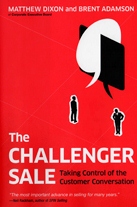Not too long ago, I was standing in a lobby of a hotel waiting to enter an elevator. Several other people were standing nearby. When the door opened, I offered for the others to get on before me. One of the women thanked me and then commented on my good manners and civility.
As someone who grew up with a strong southern heritage and raised by good parents, my mother taught me respect, civility and cordiality and to always treat people as I’d want to be treated.
As I thought about this event, I thought about another time when a board room was filled with senior leaders, many of them in product marketing and management. Gathered to discuss a critical topic with the CEO, the discussion became heated.
When a senior executive didn’t answer a question the way the CEO thought it should be answered, the CEO picked up a bagel that he was planning to eat and with a stream of obscenities, threw the bagel at the senior leaders head. It just missed him, but it set a nasty tone in the room and immediately changed the level of civility.
These two experiences are an interesting contrast of how we act, react, respond and maintain a level of civility, in our daily lives, and in the workplace.
Let’s face it, we all get frustrated with others, our organization, and when things fail to go as planned. But is it worth damaging morale, productivity and working relationships in your organization?

In the recent HBR article, The Price of Incivility by Christine Porath and Christine Pearson, the authors shared; “Rudeness in the workplace is rampant, and it’s on the rise.”
How does incivility impact your organization and you as a leader?
Using more than 14,000 data points and a poll of over 800 managers, “We’ve learned just how people’s reactions play out. Among workers who’ve been on the receiving end of incivility:
- 48% intentionally decreased their work effort.
- 47% intentionally decreased their time spent at work.
- 38% intentionally decreased the quality of their work.
- 80% lost work time worrying about the incident.
- 63% lost time avoiding the offender.
- 66% said hat their performance declined.
- 78% said that their committment to the organization declined.
- 12% said that they left their job because of the uncivil treatment.
- 24% admitted to taking their frustrations out on customers.
As leaders what can we do to maintain a civil workplace? Below are three suggestions and areas that I try to work on regularly and recommend to others.
Look at yourself – “Leaders set the tone, so you need to be aware of your actions and of how you come across to others” shares Porath and Person.
For those of us in product leadership positions, do you ask your team and others for their feedback? If not, give it a try. Setup some one-on-one time and let the person know that you are looking for honest insights into how you act and react at work. You might be surprised what you hear. “You may need a reality check from the people who work for you” confides Porath and Pearson.
Additionally, you may want to “keep a journal in which you track instances of civility and incivility and notes changes that you’d like to make.”
Teach and practice civility – “We’re always amazed by how many managers and employees tell us that they don’t understand what it means to be civil. One quarter of the offenders we surveyed said that they didn’t recognize their behavior as uncivil” shares the authors.
I once worked with a senior executive who often berated managers and employees openly. While I didn’t work directly for this person, I sat down with him one-on-one and after we had discussed some business, I shared what I had observed. He was quite shocked, a little upset, but was willing to listen. He attributed his behavior to another mentors style and he had adopted some of the bad habits. He asked if I along with some others would watch his actions and help him refine the interaction he had. Over a period of a year, he learned and applied some basic principles, changed his style and way of interaction, and over time became an effective and recognized leader that everyone enjoyed working with.
Stand up and be recognized – While product leaders are often recognized for their capabilities to guide and manage technology, teams and growth of solutions, how often are we willing to step up and speak to someone about their civility at work. I believe we forget this key aspect due to our busy schedules and life and brush it off as someone having “a bad day.” Successful leaders are the ones that monitors the habitat and their teams interaction with and are willing to coach and guide civility.
As we move into a new year, I will be looking at mysellf first, my team second and monitoring how we behave. I will continue to be honest and open with my team and if I can help others improve their civility, I’ll do it. As product leaders, I hope we can lead by example and actions and support and improve how we interact with others.
If you like the post, please share it on LinkedIn, Twitter or Google+. Here’s a quick link to use. Product Leadership – the Civil Way. A new post by @jim_holland http://wp.me/pqeWU-tj





